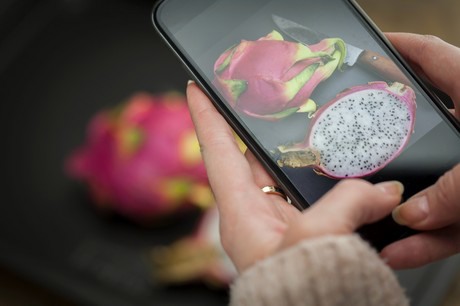Osram Opto Semiconductors, one of the three leading companies in the global lighting sector, is currently the only one developing a technology that, thanks to near-infrared spectroscopy based on LED technology (the so-called NIRED), will enable consumers to use their smartphones to analyze the nutritional data, ingredients and freshness of food.
For example, it could be used to measure nutritional substances, calories and freshness through smartphones or portable devices that already measure heart rate and pulse oximetry (i.e. oxygen saturation in the blood).
The increasing attention towards health has led the market to developing wearable devices to monitor vital signs. The next step is to help consumers analyse and monitor ingredients in their food.
Portable spectroscopy: how does it work?
Near-infrared spectroscopy based on LED technology employs the light absorption of some molecular compounds. If a specific light spectrum is aimed at a sample, the wavelength distribution of the reflected light can be used to determine the presence of some ingredients and their quantity. For example, it can be used to measure the content of water, fats, carbohydrates, sugars or proteins.
Each molecule absorbs light at different specific wavelengths. This absorption spectrum is unique and acts as a fingerprint for a particular molecule. Different functional groups absorb characteristic frequencies of the infrared radiation. By using various sampling accessories, infrared spectroscopes can analyse a wide range of samples such as gases, liquids and solids. NIRED function as compact light source for spectrometers.

A new generation of solutions
This is all made possible by a new generation of NIREDS such as Oslon Black SFH 4736 or Synios SFH 4776.
Thanks to a new phosphorous technology and integrated optics, Oslon Black SFH 4736 has increased light intensity by an impressive 60% compared to previous components. Primary optics group 90% of the light generated inside a light beam with a +/-40°C angle, providing higher optical power per surface unit on the target and therefore focusing the light exactly where necessary. As a result, more light is reflected towards the spectrometer generating a stronger measurable signal.
Phosphorous technology and Oslon integrated optics
Synios SFH 4776 also features this impressing improvement. For clients, this means a better signal/noise ratio for a simpler analysis of the food and medicine molecular composition while, so far, infrared spectroscopy analysis was limited to scientific use by chemistry and physics labs. The progress in the miniaturization field means NIRED can now be integrated within small applications such as smartphones.
Synios NIRED
The basis of the NIREDs developed by Osram Opto Semiconductors is a 1 mm² blue chip employing the UX:3 technology, which provides high light efficiency also at a high current. Light is converted into infrared radiation with the help of a phosphorous converter developed specifically for this application. A residual blue component in the light helps users locate the area to analyse. The NIRED emission spectrum has a homogeneous distribution in the infrared field between 650 and 1,050 nm. Osram's Oslon Black Flat SFH 4735, Oslon Black SFH 4736 and Synios SFH 4776 LEDs are the only ones on the market with this wide near-infrared spectral rage.
Measuring freshness with your smartphone
A new generation of devices using near-infrared broadband emitters is emerging: compact spectrometers that connect to cloud databases to compare the data with reference specifications. Analyzing the absorption spectrum of an unknown material and comparing the measurement with a databases of known molecules makes it possible to determine the quantity of certain ingredients such as the cocoa percentage in a chocolate bar.

Consumers will soon be able to use their smartphones to verify the freshness of food in supermarkets, measure the calories of their meals or verify if a medicine contains the prescribed elements.
The first devices employing this new NIRED technology have already been presented: the SCiO micro-spectrometer introduced by Israeli startup Consumer Physics is an example. It uses Osram's NIREDs and is managed via a smartphone connected to a cloud and looks like a box of matches. It employs infrared spectroscopy to identify in real time compounds such as fats, sugar, water or protein found in food, medicines and even the human body.
This is only the beginning, as new application fields for both consumers and professional users will be identified soon. In the professional field, for example, infrared spectroscopy can help implement smart farming solutions. Growers can determine the perfect moment to harvest using the NIRED to scan fruit, vegetables or cereals. A spectrometer installed on a smartphone or table will provide reliable information on the content of sugar, water, fats and protein.
To learn more about the Osram Opto Semiconductors NIRED technology, please refer to: www.osram.com/os/applications/mobile-competence/mobile-competence-spectroscopy.jsp
Additional information on the SCiO portable molecular sensr can be found at: www.osram.com/os/news-and-events/success-stories/osram-powers-scio-the-worlds-first-pocket-sized-molecular-sensor.jsp
